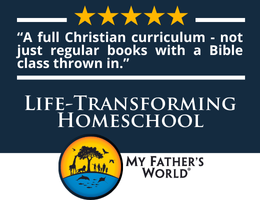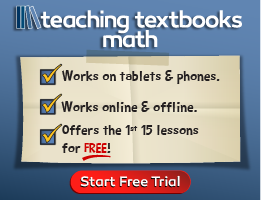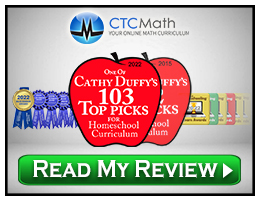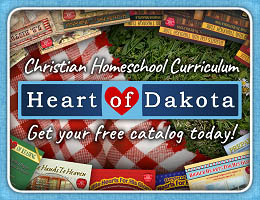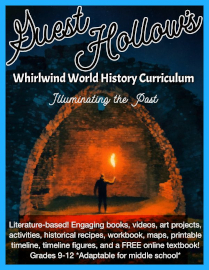Whirlwind World History, a two-semester (or more) high school course, has two primary components: a free online textbook and the Guest Hollow Whirlwind World History curriculum. The curriculum consists of several digital items. The 164-page schedule (in online, PDF, and MS Word versions), a student workbook, the workbook answer key, a timeline (using either BC/AD or BCE/CE designations), timeline figures, and a supply list.
Many videos are already embedded in the online textbook, but you can enrich the course with additional reading and videos from the optional booklist.
Course Schedule
In addition to weekly schedules, the course schedule has instructions for the entire course, an extensive booklist that ranks books in order of priority, notes regarding books that will help parents and students choose those most appropriate for them, a few pages listing recommended videos, a section of links to free resources (some scheduled and some unscheduled), a six-page supply list for cooking and art (arranged by weeks).
You can keep track of student work on the editable MS Word schedule or print out the PDF and write directly on it. All of the schedules are kept up to date, but if you’ve downloaded the PDF or MS Word schedule and don’t check back, you might miss a corrected link or other change to the schedule.
The schedule is color-coded to identify the essential and optional course elements, and it includes hyperlinks to some course content. While the online textbook (indicated with a yellow background) covers topics thoroughly, additional reading is recommended on the course schedule—generally one or more non-fiction books (yellow-orange background) and fiction books (green background) from which students will read specified pages or chapters. However, the literature is not required; if students read the online text, watch the embedded videos, complete workbook pages, and create a timeline (workbook and timeline activities have a blue background), they will have covered more than enough for course credit.
Pink and purple sections on the course schedule are entirely optional, but they might be used to expand the study over two years. Pink sections list activities (art, crafts, projects, cooking, downloadable PDF activities, and games), music to listen to, language arts ideas (e.g., create a travel brochure related to the period and place studied), videos (both short and full-length videos in addition to those embedded in the textbook), and websites for additional content and activities. The purple section lists pages or chapters from recommended reference books.
Some very worthwhile document-based questions are included among the activities. They require extra reading, writing, and critical thinking. While some high school history courses now include document-based lessons—very helpful for college-bound students and those preparing for the AP History exam—not all students need to do them.
The course should take one to two hours per day, depending on how many activities students do and how much of the literature they read. While the textbook has embedded video links, it does not have questions or assignments. Questions and other activities are found in the student workbook.
Online Textbook
The free Whirlwind World History Textbook is licensed under a Creative Commons license and is based on material from several pre-existing textbooks and websites, such as Western Civilization: A Concise History by Dr. Christopher Brooks and Modern World History by Dan Allosso and other authors, and Wikipedia. It incorporates videos from online sources such as Crash Course, History with Cy, PragerU, Three Minute Philosophy, and One Minute Economics. The textbook is not downloadable.
The online textbook covers topics thoroughly with plenty of material to read. The content is secular but includes extensive coverage of major world religions. It has excellent coverage of global history, not just Western civilization, including discussions of philosophies, major world religions (from a secular point of view), and other major cultural developments. While it mentions a few events up through 2021, the textbook is lighter on historical coverage for the 21st century.
The textbook is clearly an amalgamation of resources, sometimes reflecting clashing opinions, especially between the text and the embedded videos. For example, the section on “Social Democracy” under “Postwar Society” praises social democracy and the rise of the modern welfare state. That point of view is countered by two embedded PragerU videos titled “There is No Such Thing as Free Healthcare” and “Socialism Makes People Selfish.” Even so, the text itself often presents an informative balance of opinions, such as its explanation of “What Went Wrong with the USSR” which offers three different views for students to consider. This is a more sophisticated treatment of the topic than I find in most high school textbooks.
Workbook and Timeline
The 375-page, full-color student workbook presents questions under subtopics for each chapter. For instance, questions about “Ancient Mesopotamia,” “Sumer,” and “Sumerian Achievements” are all grouped separately. Students can read a section of the text and answer questions immediately, or they can read the chapter and then answer the three or more pages of questions for the chapter at that point. Work for each chapter is also numbered by week, so students can easily see how much needs to be completed each week.
The questions are an assortment of true/false, fill-in-the-blanks, circle the correct answer, and short essay. The workbook pages often include illustrations or graphics, so they don’t look like boring lists of questions. They occasionally include charts or drawings to complete, and discussion questions, such as, “Think and discuss, but don’t write an answer: Do you think our current society is patriarchal? Why or why not? Why do you think the status of women fell in Mesopotamia over time?” (p. 23).
Student workbooks also have one or two notebooking pages and one or more mapwork pages per chapter. Each mapwork page is followed by a reference map/answer key. Occasionally, another activity is included, such as “Draw a Barbarian” on page 113. The notebooking pages, which usually have colorable images at the top, may be used for students to take notes as they read the chapters or for extra writing assignments, such as essays, reports, journaling, and book reviews.
The introductory information says, “If you have an iPad, you can view this workbook in an app such as Notability or GoodNotes. Write in the answers with a stylus or type them.” Students not using one of these options will need to have the pages printed out, and color printing is required for the map pages.
The timeline figures, in a separate file, also need to be printed in color. They include some images of blank books for students to write the titles or draw covers for the books they read. The timeline figures can be mounted on Guest Hollow’s printable timeline or any blank timeline.
The student workbook has a separate answer key.
As I mentioned before, there are no quizzes and tests. However, students will have had to assimilate the information fairly well to be able to write lengthy paragraphs answering questions such as, “Summarize the reason for the 1st Punic War” (p. 92) and “Write a brief summary about Tiberius and his reign” (p. 102). Parents who want more accountability in the form of tests might pull questions from the workbook pages, perhaps presenting them in a different format.
Note that some TED-Ed videos are scheduled, and some of them have online quizzes and/or discussion questions. (Access the extra content for TED-Ed videos on YouTube by creating a TED-Ed account.)
Optional Booklist
There may already be more recommended books in the curriculum than most homeschoolers can use as part of their history course, but still more are available for those who want them, especially those who want to create a literature course for English credit that correlates with world history. The printable Guest Hollow’s Big Bad Beautiful Booklist (available separately) has hyperlinks to both free and purchasable books and movies, all arranged under time periods, and under the headings, Kids, Homeschool, Adults, and Movies. (Note that you must be logged into your GH account to access the booklist.) While it sometimes tilts toward recommendations supporting a Protestant viewpoint (e.g., four or more on Martin Luther for the Reformation period), there’s plenty to choose from unless parents want to support a Catholic perspective.
Summary
Guest Hollow’s Whirlwind World History course should work well for homeschoolers who appreciate the variety of viewpoints they encounter in the textbook, videos, and books. The course has more content than any student can complete, but it is easy to prioritize the resources. The combination of the online text (and its many embedded videos) with the workbook, notebook, timeline, supplemental reading, arts and crafts, and cooking makes the course engaging for students.

